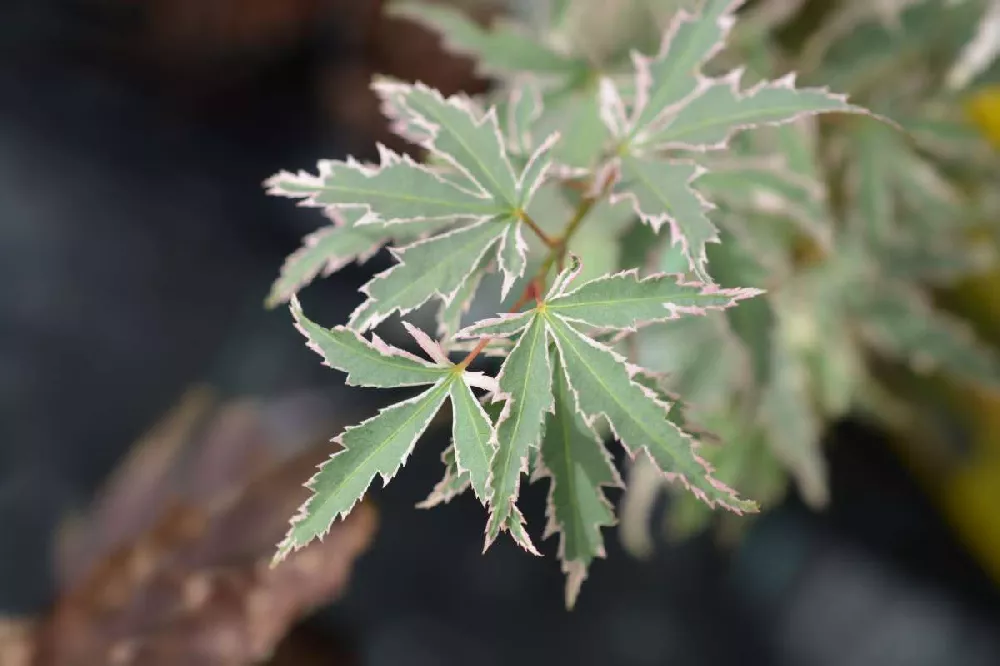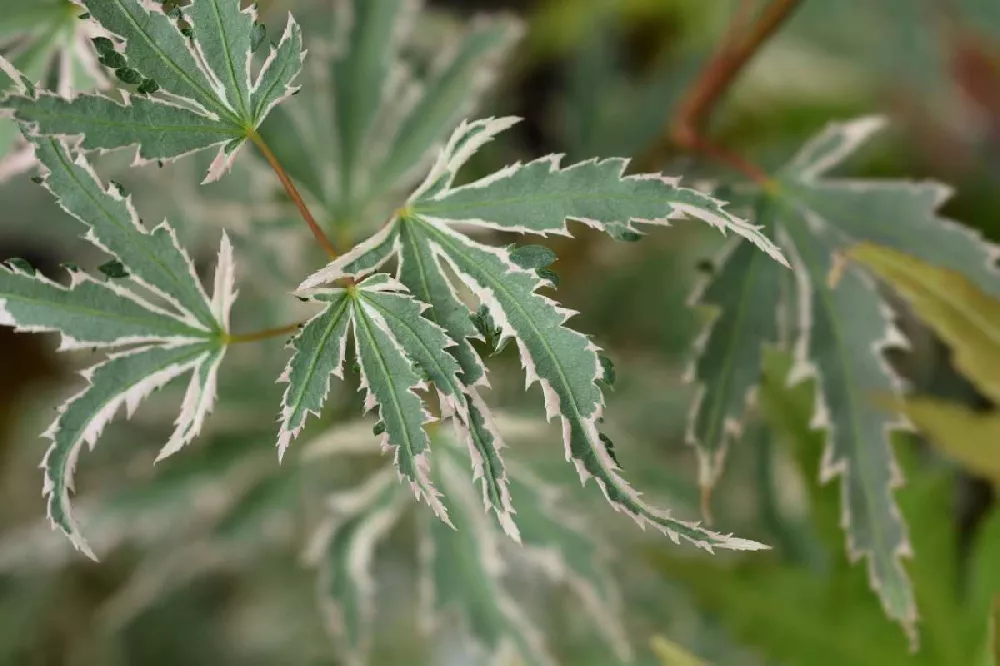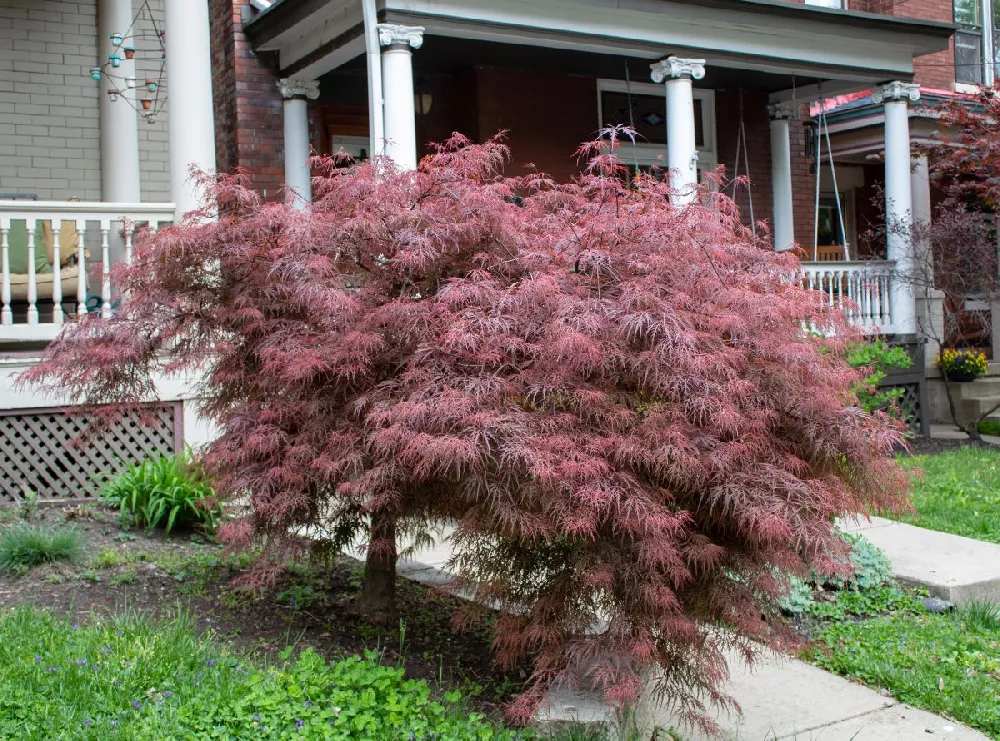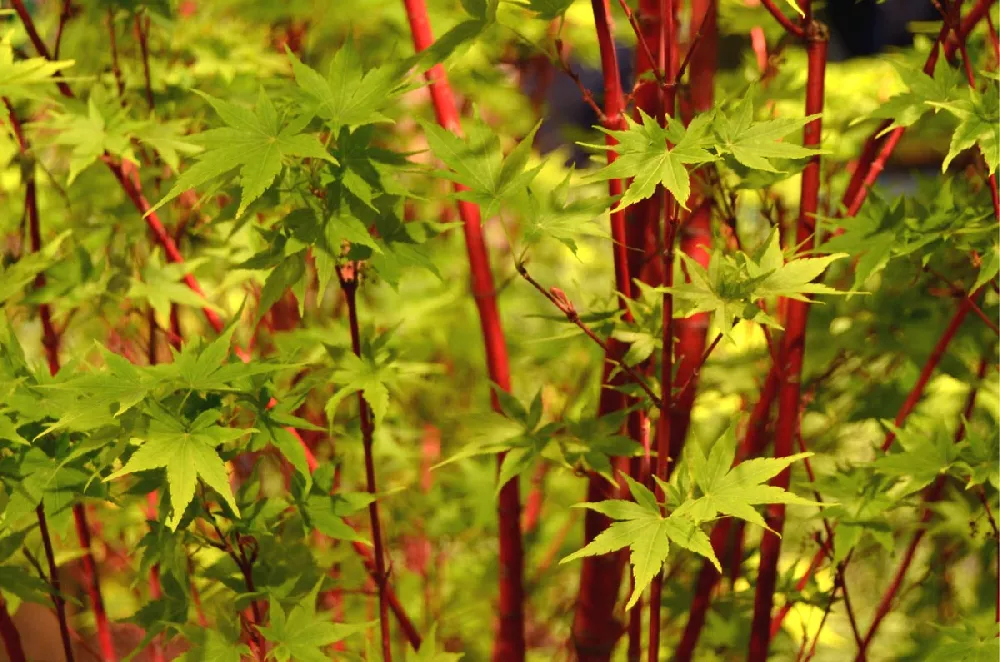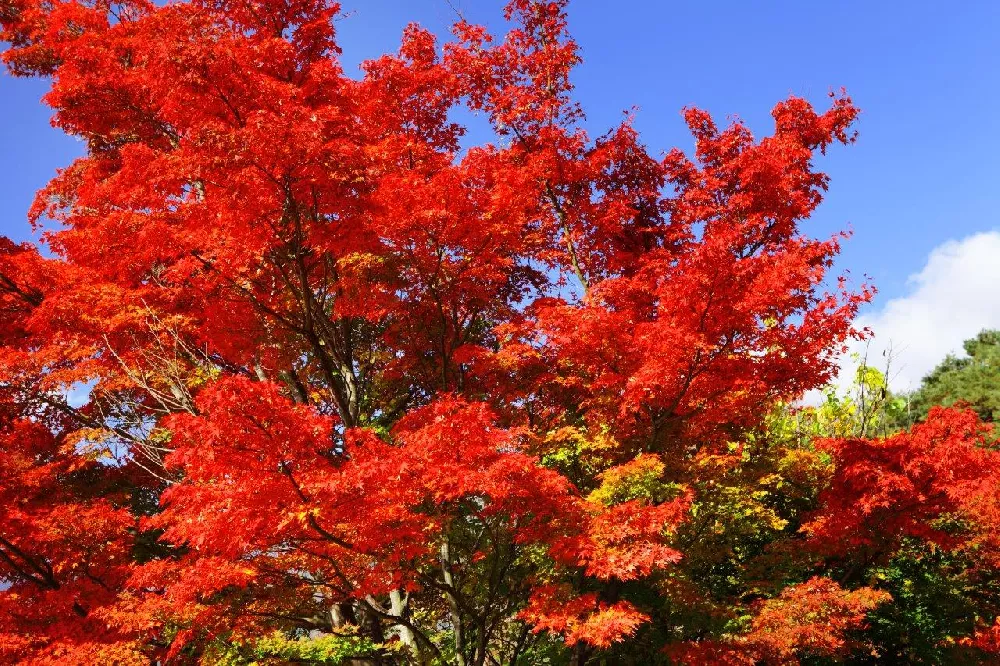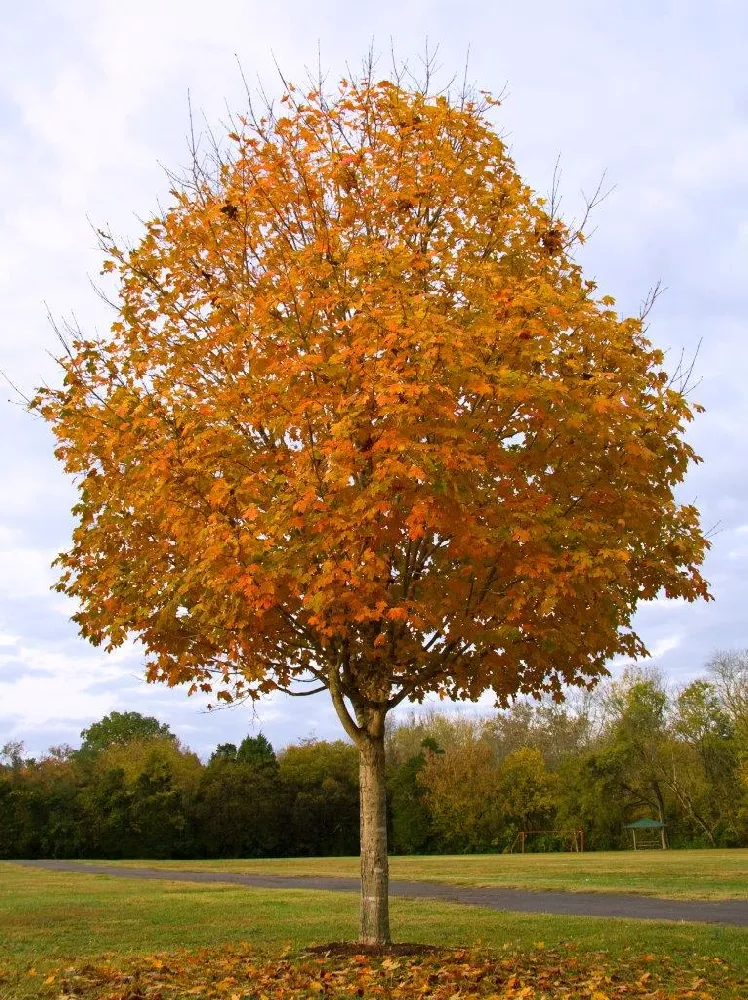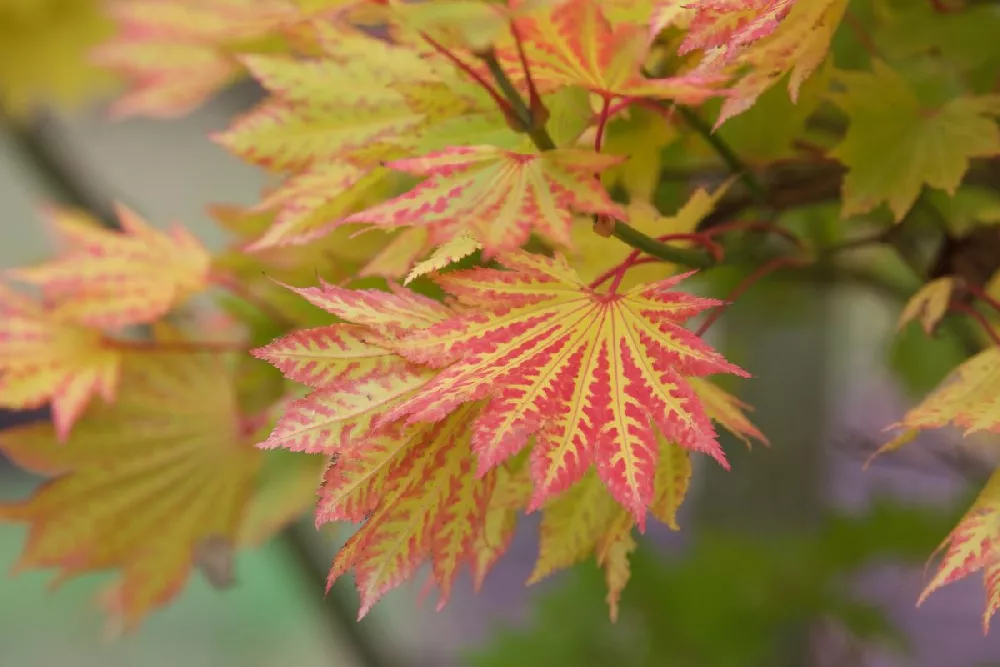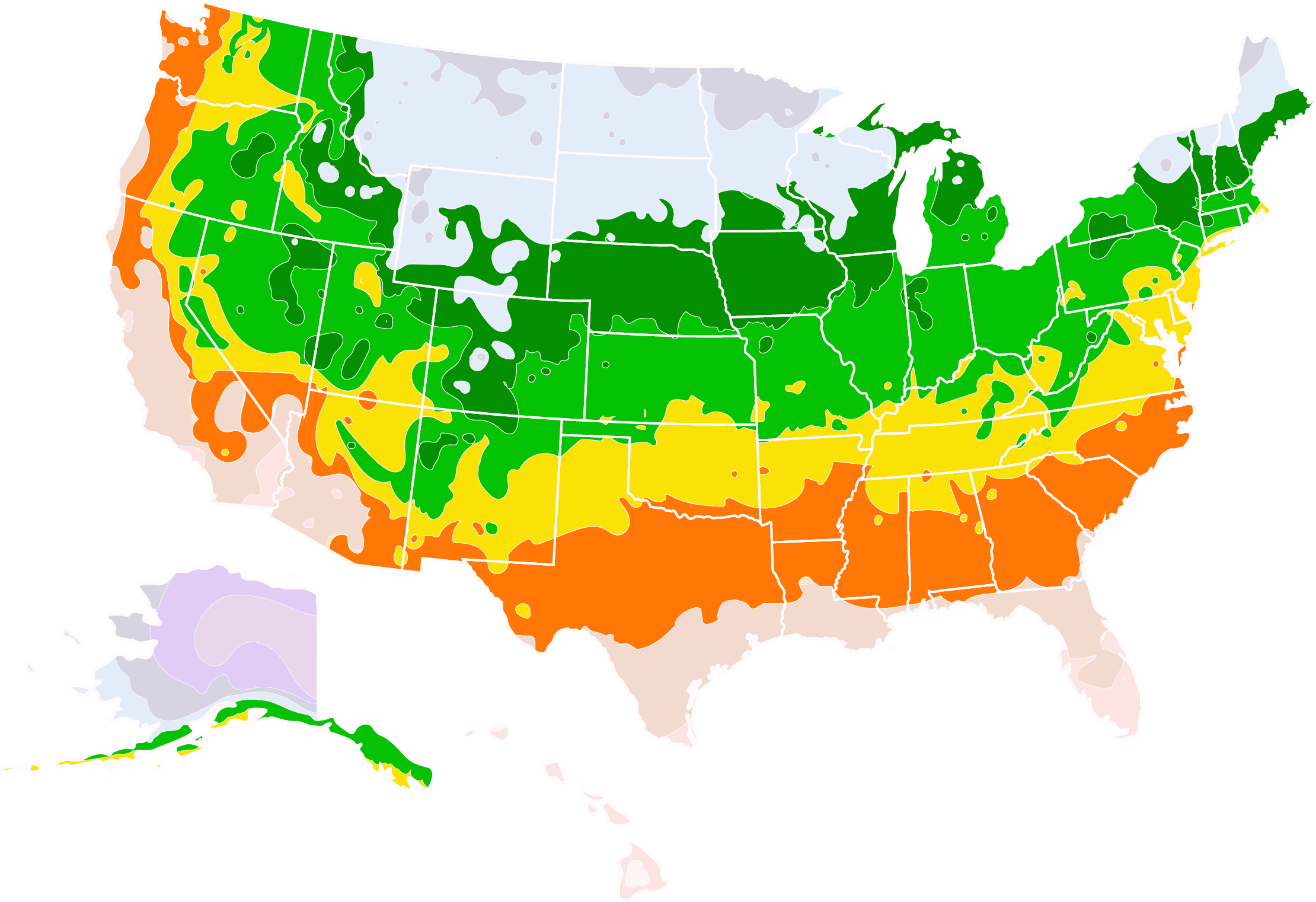- Home >
- Maple Trees >
- Butterfly Japanese Maple Tree
Butterfly Japanese Maple Tree for Sale - Buying & Growing Guide
The Butterfly Japanese Maple Tree, Acer palmatum 'Butterfly,' is an exquisite cultivar that brings four seasons of delicate beauty anywhere it's planted. In spring, the foliage unfurls with a pale pink color that shifts over time to a gray-green highlight with silvery white margins and touches of red. The leaves are deeply lobed and lace-like and form a full, umbrella-shaped canopy throughout the summer months. In fall, the leaves turn deep scarlet, yellow and bronze. In winter, the elegant tracery of the tree's branches forms a lovely overlay to snowy backgrounds. These petite trees are easy to care for and need little attention. Their pruning needs are minimal, and they are not prone to any diseases. Here are a few more reasons to consider adding one or more to your garden:
- Can be grown in large containers.
- Perfect for use with bonsai culture.
- Its smaller size makes it an excellent choice for smaller urban yards.
Enter your zip code to find nearby stores that may carry this plant.
Plant Care
Sunlight

Plant this maple tree in partial shade with four hours of sunlight a day; tolerates full sunlight in northern regions.
Watering
Water your Japanese maple about once a week, giving it an inch of water at a time.
Fertilizing

Feed lightly in early spring with a balanced, slow-release product designed for landscape trees.
Planting and Care
Planting instructions
Site your tree where it will get the right amount of sunlight: in the northern parts of its range, it will thrive in full sunlight, with six or more hours of direct sunlight a day. In the south, however, it appreciates filtered shade in the afternoon. Choose a spot that is sheltered from prevailing winds and in soil that drains well. Unpot your tree and tease out any encircling roots, which can girdle the tree and slowly kill it. Dig a hole that’s as deep as the root ball and twice as wide. Place the tree in the hole, spreading out the roots. Holding it upright and steady, fill in around the roots with topsoil, tamping down as you go to eliminate air pockets. Water thoroughly. Apply a two to three-inch layer of organic mulch such as bark chips around the root zone to conserve moisture and hinder weed growth but keep it from touching the trunk to avoid problems with rot.
Watering and nutrients
Water your Butterfly Japanese Maple about once a week, giving the tree roughly an inch of water each time. Water in the morning or evening and avoid wetting the leaves—especially during the heat of the day and in hot weather. Fertilize lightly in early spring with a half-strength application of balanced, slow-release fertilizer designed for landscape trees and shrubs.
Pollination
The Butterfly Japanese Maple has small purple-red flowers in spring which are attractive to pollinators such as bees and other insects. Pollinated flowers lead to small samaras, or double-winged seed pods, which detach in autumn and drift in the wind.
Pruning
Prune out any dead, diseased or damaged limbs whenever you see them. Avoid maintenance pruning until your tree has a year or so to become established in your garden. The tree shouldn’t need any other pruning, but if you wish to lightly shape the tree, do so in late winter before the buds break.
Pests and diseases
Pests that may appear on your Japanese maple include horse chestnut scale insects and aphids. A light infestation shouldn’t bother your tree if it is healthy. If the infestation is severe, consider releasing beneficial insects such as ladybugs and lacewings to attack the pests. Diseases of the Japanese maple include verticillium wilt, botrytis and root rot. These trees may also be susceptible to leaf scorch, especially in the south, which can be caused by too much sun or insufficient watering.
Achieving maximum results
One of the benefits of this lovely small tree is that it is small in stature, meaning it is a great choice for a smaller yard or garden. That also means that it is possible to grow this cultivar in a container—in fact, some gardeners use it to create tiny bonsai that are only a foot or so high. Choose a container about twice the size of the root ball, with good drainage holes in the bottom. Using a good-quality potting mix, plant as per our directions above. Note that you will need to water your pot-grown Japanese maple more often than you would if it were grown in the ground. Plan on replanting it with refreshed soil every four or five years.
FAQs
How big does the Butterfly Japanese Maple Tree get?
These Japanese maples reach a mature height of 6 to 12 feet, with a width of four to seven feet. A tree that is container-grown may remain smaller than this because the roots are constrained by the size of the pot.
Where can I grow the Butterfly Japanese Maple?
This tree is hardy down to -10 degrees Fahrenheit, which corresponds to USDA growing zones five through eight. If you live too far north to grow it safely, consider planting it in a container that you can bring inside during the cold winter months.
How is the Butterfly Japanese Maple best used in my garden?
A single Butterfly Japanese Maple Tree placed carefully in a front yard would be a superb specimen planting. Consider surrounding it artfully with gravel and attractive stones. Because it is a relatively small tree, it would also work well in smaller mixed planting beds or in the corner of a tiny yard. If planting it near your home, be sure to leave at least four or five feet between the tree and the building to allow for growth.
Compare Similar Products
You can't add more Product Name - Product size to the cart.
OK